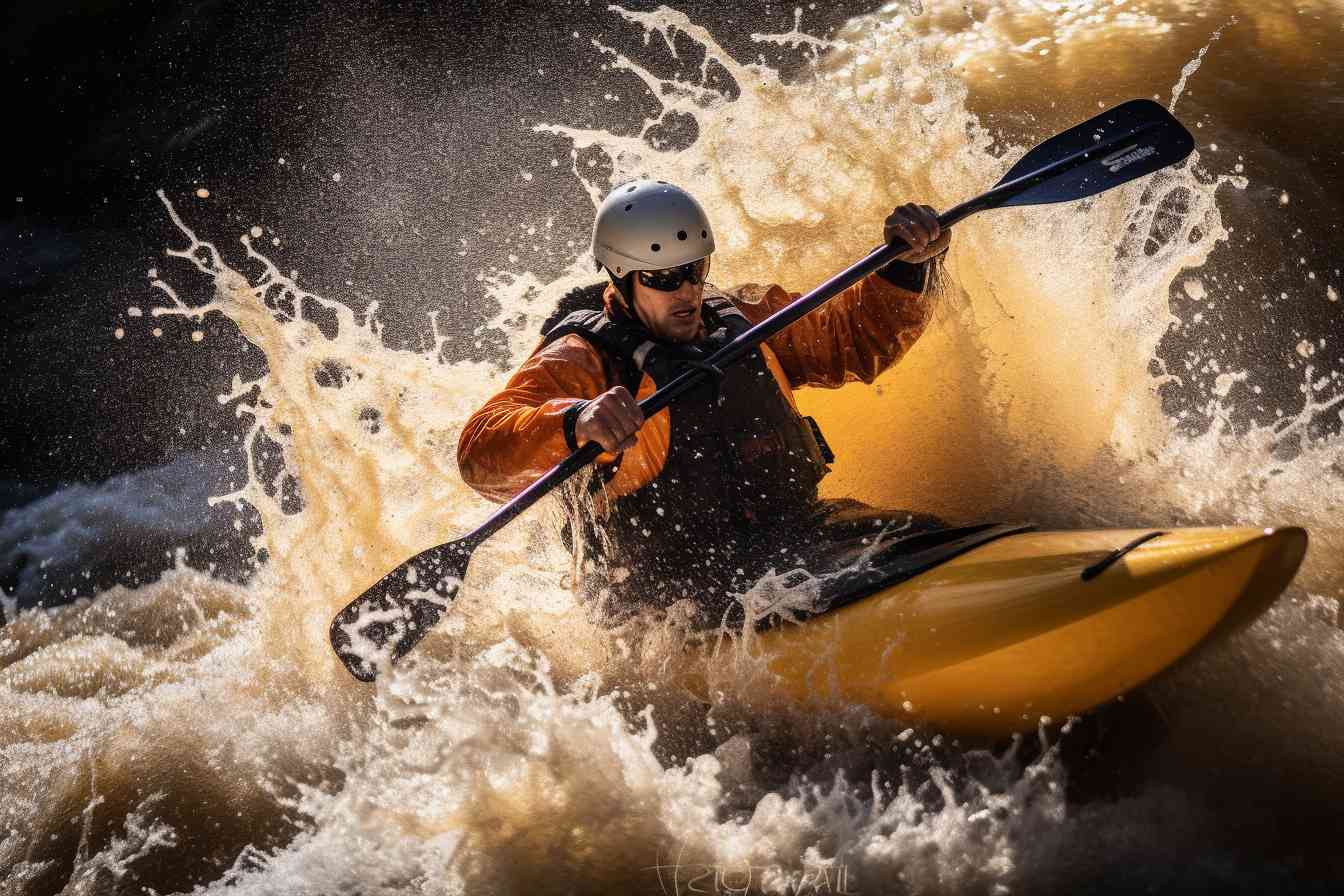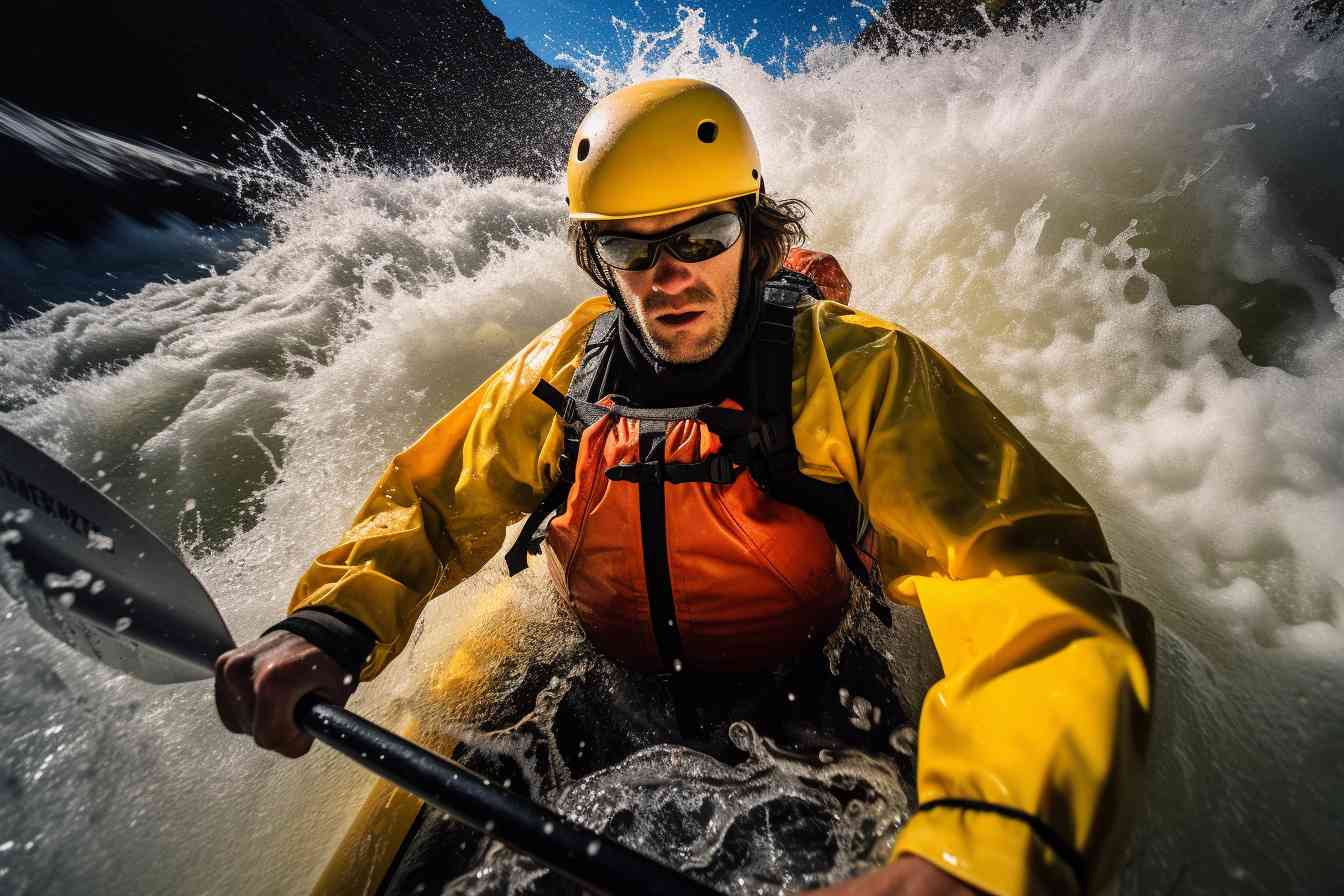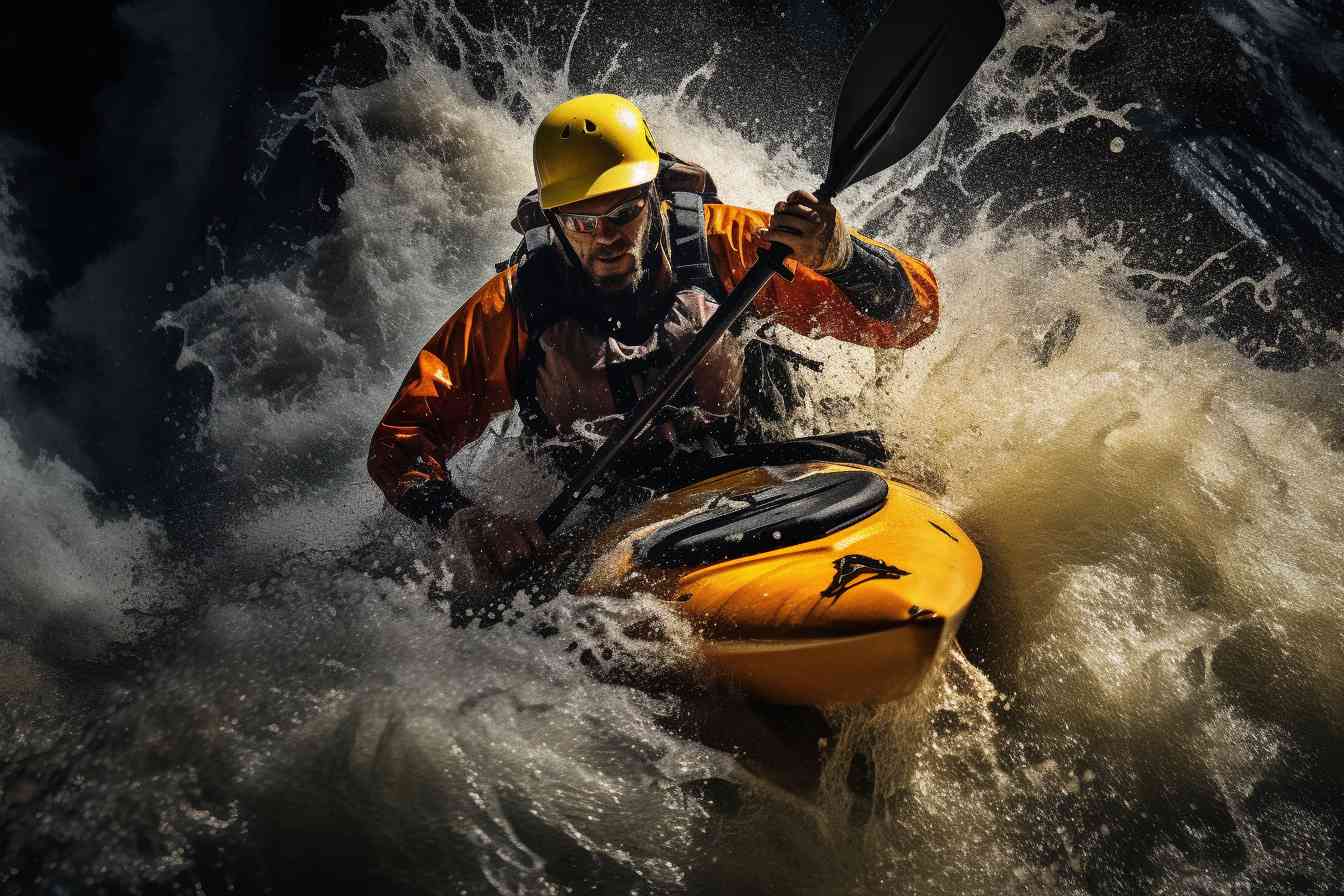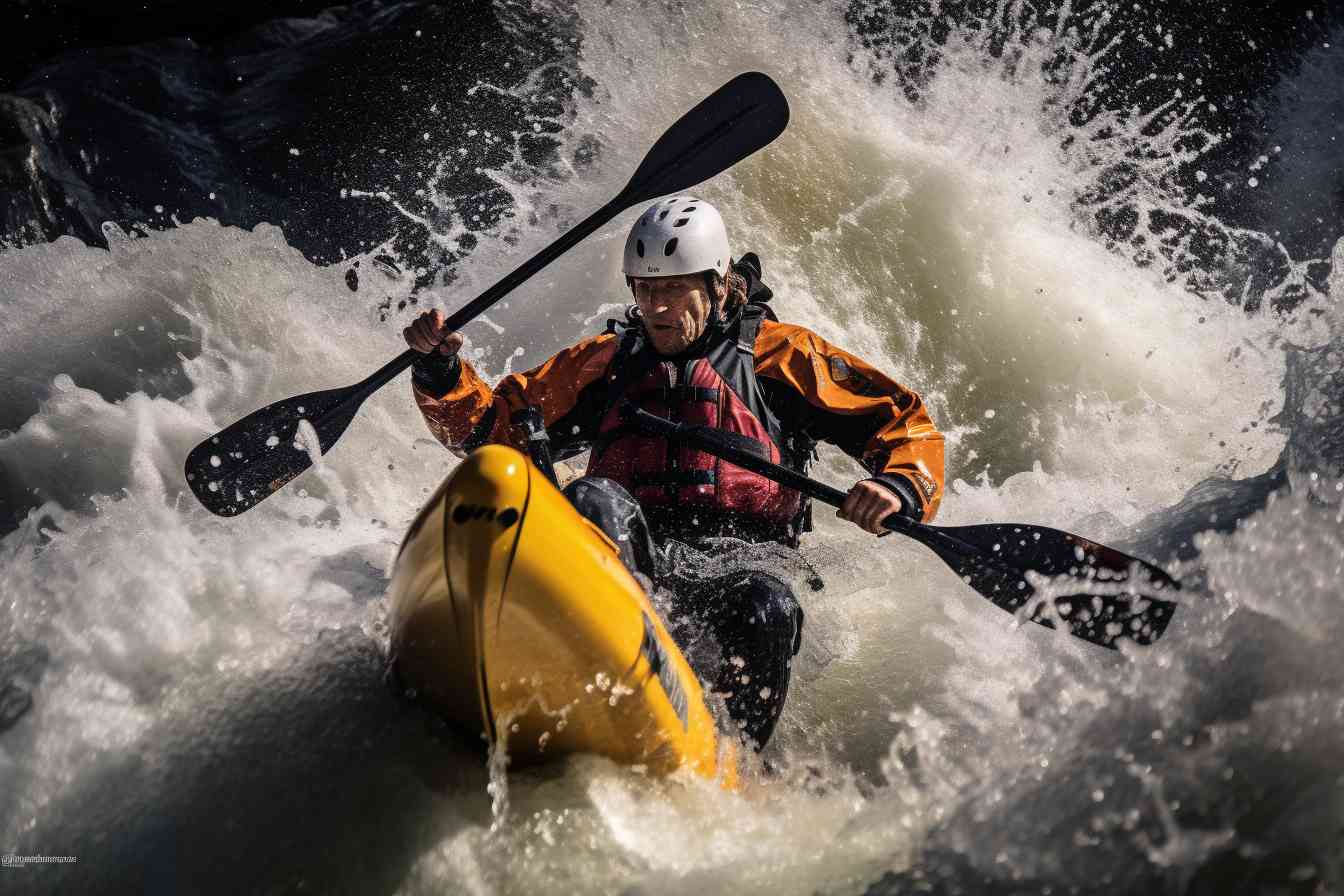Intro: Is Kayaking Dangerous

Alrighty, let’s dive straight into the crux of the matter – is kayaking really dangerous? Well, just like most outdoor activities, one could say it boasts its own fair share of risks. However, stopping right there wouldn’t do justice to the whole story. Let’s delve deeper, shall we?
To paint a complete picture, picture it this way: riding a bike can be heaps dangerous when you’re speeding down a steep hill without a helmet on. But, on a calm neighborhood street with protective gear, it’s basically safe as houses. In that same vein, kayaking has its share of danger if you venture out unprepared or don’t respect the basic rules. Then again, it can be a relaxing, even therapeutic, activity when done correctly.
The waters can be treacherous—rapid currents, icy temperatures, and hidden submerged objects are just a few hazards that might lurk beneath an otherwise calm surface. The weather too, can turn on a dime, leaving a kayaker to battle high waves or find their path back in dense fog. Gosh, that sounds like something out of a suspense movie, don’t you think? However, this doesn’t mean you’ll face death every time you paddle out.
Just as a biker whizzes around obstacles or slows down on a risky path, a kayaker learns to respect and read the water, equips himself properly, and keeps an eye on weather reports. Skill, preparedness and an ounce of common sense make all the difference!
Of course, I shuld mention that safety precautions are vital. Life jackets, buoyancy aids, sun protection, and sturdy water shoes are just a few of the essentials. Plus, knowledge on how to handle emergencies, like effective ways to roll back over if your kayak capsizes, are crucial aspects of safety training.
So, is kayaking dangerous? It can be. But, with the right education, preparation, and respect for nature, it can also be a safe and rewarding experience. It’s no more dangerous than ridin’ a bike, as long as you take it seriously and don’t act the fool. Talk about striking the right balance, eh?
Is Kayaking Safe For Beginners?

Well, well, isn’t this the question of the day! If adrenaline-rushing activities push your buttons, you’ve probably asked yourself this a thousand times; is kayaking safe for beginners? So, let’s dive right in! Here’s what you need to know – kayaking can be a safe sport, whether you’re an experienced kayak ‘hero’ or just a fresh-faced newbie. But, be aware, it’s not without its risks.
Safety in kayaking, much like in any other sport, heavily relies on your preparation and understanding of the sport. As a beginner, you might be tempted to brave the waters without much thought. Emotions high, heart pounding in exhilaration – I’ve been there, trust me! However, don’t forget the fundamentals. Make sure you have proper safety gear, like a life jacket, helmet, and wet suit, particularly in cold weather or water situation. Remember, these are not fashion accessories; they exist for your safety!
Knowing your limits is essential, too. Your emotional fortitude may be strong, but your physical endurance might be a different story. Milk runs to get a feel for it before hitting tougher terrains, and I assure you – no shame in that! In fact, it shows wisdom and gives you an opportunity to familiarize yourself with the ways of the waters.
I’ve seen situations where newbies have ventured off into turbulent waters on their first excursion. Not an ideal scenario, folks. Start off on quiet, calm waters and once your confidence builds – then only tackle the rougher waters. Kayaking can be uber fun, but it’s important to take it slow and respect the transition process.
Right! So, there it is. It sure can be if you go by the book, take necessary precautions, and consider your limitations. Remember, we all have our firsts, and cautiously venture onto the waterways can flip the proverbial coin from danger to a fun-filled day!
Is Kayaking Dangerous Reddit
Well, I’m not someone who typically hangs out on Reddit, but this is a question that deserved my answer. So let’s take ourselves into the layers of Reddit, to see what the community says about whether kayaking is dangerous or not.
• One argument is how beginners often overestimate their abilities. Reddit users frequently echo the sentiment that inexperienced kayakers usually overstep their skills, leading to potentially dangerous situations. I feel the same way, and I’ve seen it happen.
• There’s a common belief that not wearing a personal flotation device (PFD) or ignoring safety practices is a recipe for disaster. Now, I cannot stress enough how much I agree with this point. Safety first, always.
• Reddit kayakers often touch upon the dangers of kayaking in bad weather. Unexpected shifts in weather can turn an enjoyable paddle into a struggle for safety. My own experience paddling in a storm backs up this sentiment.
• Kayaking in unfamiliar waters is cited as another hazard. Many users warn against exploring unknown bodies of water without sufficient knowledge or prep. In my mind, I’m reminded of several times I had close shaves because of this.
• Fatigue is another concern raised often by Redditors. Long trips without adequate rest and nourishment can lead to tiredness which in turn can lead to accidents. Egads, I’ve felt the burn of a long paddle without enough breaks.
• The Reddit community also shares warnings about kayaking alone. They point out the risks associated with not having someone nearby should trouble arise. I’ve got to tell ya, the thought alone of being stranded and alone out in the open water makes my heart race.
• Lastly, there’s a consensus that lack of respect for the power of water can lead to serious danger. Many Redditors emphasize the importance of acknowledging the unpredictable nature of water. You don’t have to tell me twice – I take it to heart everytime I’m out paddling.
End of the day, I stand with the Reddit community in saying that yes, kayaking can be dangerous, but much of it depends on how you approach it, and the precautions you take.
How Likely Is A Kayak To Capsize?

Alright, let’s get into the nitty-gritty of this topic – capsizing in a kayak. Now, I’m not here to scare you off, but rather shed light on the factors involved. You see, the likelihood of a kayak capsizing ain’t a simple yes or no answer. It really depends on several things, such as the type of kayak, your skill level, and the conditions you’re paddling in.
Sport yaks – the kind you see in competitive events – are designed to be agile. They’re sleek machines, but that sleekness comes at a cost: stability. So, if you’re amateurish or a greenhorn, it might be easier to end up in the drink. On the other hand, if you’re in a broad, sit-on-top kayak, you’d practically have to do a jig on the deck to tip it over!
Your ability plays a huge part too. Experienced rowers can manage even a fidgety boat and maintain equilibrium. Now, if you’re new to the game, don’t worry! Kayak skills can be sharpened with time, practice, and maybe a few unavoidable dips in the water.
But hey, let’s not forget about ol’ Mother Nature. A calm lake? You’re golden. But stirring up waves in the middle of an ocean or dealing with rapid currents? That’s a whole different kettle of fish! In those situations, even a veteran paddler could capsize.
So, is kayaking dangerous? Nah, not really. But like everything else in life, it involves a bit of risk. Can a kayak capsize? Yes. Is it bound to happen? Not necessarily. So, don’t let fear hold you back! Get into that boat, grab your oar, and start rowing! Happy kayaking, my friend.
Is Kayaking On A Lake Dangerous
I grew up around water bodies and as a kayak guide, I can tell you that kayaking can be both rewarding and risky. I’ve seen my fair share of sunsets over serene lakes and also some accidents that shook me to the core. Here are some points to consider:
-
Water Conditions: The water conditions on a lake can change rapidly. One minute you’re paddling through calm waters, and the next you could be fighting against gusty winds and choppy waves. Unpredictable weather can certainly make kayaking dangerous.
-
Limited Skills: Inexperience can often lead to danger. If you’re a novice kayaker, you must be careful. Practicing on a lake may seem harmless, but without the right training and knowledge, it can turn risky quickly.
-
Equipment Issues: Not having proper or faulty equipment can put you in a dangerous position. If your kayak leaks or your paddle breaks, you could find yourself stranded in the middle of the lake.
-
Wildlife Encounters: Not all wildlife is friendly, and some can indeed be threatening. Disturbing a beaver’s home or accidentally paddling into a snake’s territory can quicky escalate your peaceful kayak ride into a dangerous escapade.
-
Hypothermia Risk: Even though other water bodies like rivers or seas get most of the attention when it comes to hypothermia, lakes can be just as risky. If you tip over and the water is frigid, you’re at risk of hypothermia.
-
Lightning Strikes: If you’re kayaking during a thunderstorm, you’re basically sitting in the water with a large metal pole (your paddle). This makes kayakers vulnerable to lightning strikes during storms.
Most of these hazards can be avoided with proper preparation and awareness. It’s always important to check the weather forecast, be mindful of local wildlife, wear appropriate clothing, and make sure your equipment is in good working order. And if you’re a beginner, consider taking some kayaking lessons before venturing out on your own. Happy paddling!
What Happens If Your Kayak Flips?

Well, first off, let me tell you – kayaking is an absolute thrill! But let’s address the elephant in the room – is kayaking dangerous? Specifically, what happens if your kayak flips?
When you’re out on the water, there’s always a chance that your kayak might take a tumble. Panic might be the initial feeling when you find yourself in the water, and it’s completely natural. It sudden, it’s unexpected and it can definitely throw you for a loop!
The first step, though, is to stay calm — easier said than done, I know, but it’s essential. You’ve gotta remember that most kayaks are designed to easily roll over without sinking. Usually, the boat won’t be far from you after it flips. The trick is to grab hold of it, pull yourself up and then flip it back over.
If you’re wearing the right gear — a buoyancy aid or life jacket — you’ll float on the water surface, getting you some extra seconds to gather your thoughts and make a plan. With some elbow grease and a little help from your buoyancy aid, it’s entirely possible to get back in your boat, even in the middle of a lake or river.
Now, if you’re kayaking in a river with fast currents, it’s a different scenario. The current could push your kayak downstream, making it hard to get back in. So training for self-rescue and edging techniques become pivotal.
But hey, don’t let this possibility discourage you. With the right training, the right gear, and a healthy respect for the water, kayaking can be as safe as any other outdoor sport. Remember, proper preparation prevents poor performance – or in this case, it makes sure your day of paddling doesn’t turn into a day of swimming!
Is A Kayak Easy To Flip?
Whoa, hold your oars just a minute there! Are we discussing flipping over in a kayak? Pray, let not your hearts sink with apprehension, my fellow kayaking aficionados, for I am here to address this very query, in my uniquely eccentric manner.
I hate to burst your bubble, but the answer isn’t a simple yes or no. It’s kinda like asking, is it easy to fall off a bike? It really depends on the person and the bicycle, right?
For instance, a novice kayaker with zero training might find it pretty challenging to maintain balance and yeah, they might end up taking an unwanted dip! The shape, design, and stability of the kayak could also play a significant part. Some kayaks, especially those designed for speed, might seem a tad wobbly to a newbie.
But hang on, don’t let this put you off. The charm of kayaking is in its rhythm. With excellent instruction and some practice, you’ll soon get the hang of the balancing act. Heck, you might even perform some tricks safely in no time! Remember, practice makes perfect – even on the waves! So breaking it down, is a kayak easy to flip? Not necessarily, if you know the ropes and have a steady head on your shoulders.
But, let’s not ignore the fact that unexpected situations can occur. Sometimes, Mother Nature throws us a curveball! If you find yourself in choppy waters, that kayak might seem a little more feather-light to handle. So, always prepare for unpredictable conditions: wear a life jacket, tie up your gear, and most importantly, don’t paddle out farther than you can swim back. Stay safe, folks!
In conclusion, a kayak isn’t necessarily easy to flip, but it ain’t impossible either. It’s all up to you, your experience, your kayak and Lady Luck! Happy paddling!
Final Verdict
Well now, let’s talk turkey – is kayaking really dangerous? In all honesty, the answer to this question can be both yes and no. Ah, the beauty of ambiguity, am I right?
The danger level mostly depends on your skills, experience, and the precautions you take. If you’re a newbie paddler getting your kayak in a calm lake with all the necessary safety gear, the risk is minimal. But, if you’re running a whitewater river or the open ocean with heavy winds and strong currents, things can go sideways pretty quick, right?
But fear not, because with the right training, preparation, knowledge about weather conditions and equipment – you can significantly reduce the risks involved in kayaking. Learn how to self-rescue, take a buddy along, and stick to waters that match your skill level.
Sure, some may argue that every sport has its own level of risk attached, and folks, they wouldn’t be wrong! But don’t let risk eclipse the beauty and adventure of kayaking. As they say, no guts, no glory, right? But remember, it’s pertinent to strike a balance between daring and caution.
Phew! Hope that sums it up. Kayaking, like any other sport, has its inherent risks, but with focus on safety and knowledge, the sea (or river or lake) is your oyster! Go out, paddle away, and enjoy the ride. Kayaking isn’t just a sport, it’s a lifestyle!
Frequently Asked Questions
Is kayaking dangerous?
Yes, it can be. Like any outdoor activity, kayaking comes with risks such as sudden changes in weather, fast currents, or encounters with wildlife. Proper training, use of safety equipment, and understanding of your environment can minimize these risks.
What are the most common dangers in kayaking?
The most common dangers include capsizing, hypothermia, drowning, getting swept away by strong currents, collisions with other watercraft, and damage to the kayak itself.
Can I go kayaking if I can’t swim?
While it’s recommended that you’re able to swim, it’s not a strict requirement for kayaking. However, you will need to wear a life jacket at all times, and it’s crucial to stay calm if you end up in the water.
Is sea kayaking more dangerous than river kayaking?
Each type comes with its unique risks and challenges. Sea kayaking can be risky due to tides, waves, and the potential for longer distances from shore, while river kayaking has hazards like rapid currents and underwater obstacles.
How can I minimize the dangers of kayaking?
A combination of safety measures is the best approach. These can include learning basic kayaking skills, wearing appropriate safety gear such as helmets and life jackets, checking weather conditions, and kayaking in groups.
Are there any health risks associated with kayaking?
Most health risks associated with kayaking relate to overexertion, sun exposure, or dehydration. However, these risks can be mitigated by staying hydrated, wearing sun protection, and pacing yourself.
Can dangerous animals threaten me while kayaking?
Potentially, yes. Depending on where you are paddling, you could encounter animals like alligators, sharks, or snakes. However, such encounters are relatively rare, and animals will generally avoid you.
Are there certain weather conditions that make kayaking dangerous?
Yes, stormy weather, high winds, and fog can all amplify the risks of kayaking. It’s always important to check the weather forecast before heading out, and avoid going out on the water in adverse conditions.
Are children at more risk while kayaking?
Children can be at higher risk due to their lower body strength and swimming abilities. However, with adult supervision, appropriate safety gear, and a calm, shallow paddling area, they can kayak safely.
How do I get help if I’m in danger while kayaking?
Always carry a whistle to signal for help. If you’re coastal kayaking, a VHF radio can be useful. It’s also recommended to kayak in groups, so someone can assist immediately or raise the alarm if needed.

